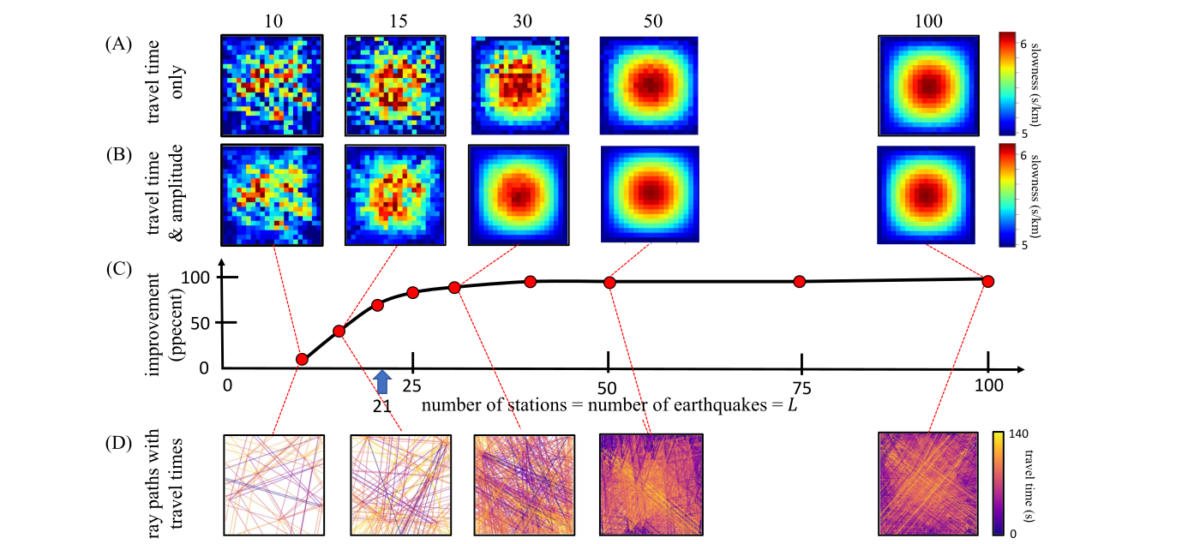Vol. 58, No. 1, 2023
Abstract
In the past, geotomographic imaging of phase velocity using Rayleigh waves has mostly relied upon travel time data (or, equivalently, path-averaged phase velocity data). Over the last decade or two, the wide availability of observations from well-calibrated seismometers has enabled the use of surface wave amplitudes to supplement travel time data. Amplitudes vary in a heterogeneous Earth due to lensing effects, with high velocity patches leading to defocusing and lower amplitudes and low velocity patches leading to focusing and higher amplitudes. Amplitude data complements travel time data, because while the latter is due to the phase velocity along the propagation path, the former is due to the second derivative of phase velocity perpendicular to it. In this study, we quantify the benefit of supplementing traditional travel time geotomography with amplitude data. Key to our formulation is the representation of the spatially-varying phase velocity using cubic splines, which allow second derivatives to be stably and efficiently computed. We find that high-quality (10 : 1 signal-to-noise ratio) amplitude data improves recovery of the phase velocity by 95 % and poor-quality (1 : 1 s.n.r.) by 75 %. Furthermore, the improvement is excellent irrespective of whether the azimuthal coverage of sources is poor or good, and irrespective of whether the data are sparse and the problem underdetermined, or plentiful and overdetermined. We also examine the viability of a joint inversion for phase velocity and intrinsic attenuation factor. This problem is not as well-behaved as the velocity-only one. Its sensitivity to amplitude noise is higher, with 1 % amplitude noise leading to up to 4 % phase velocity error; furthermore, the attenuation factor is well-recovered only when the problem is overdetermined. A squeezing analysis indicates that phase velocity and attenuation factor can significantly trade off.
